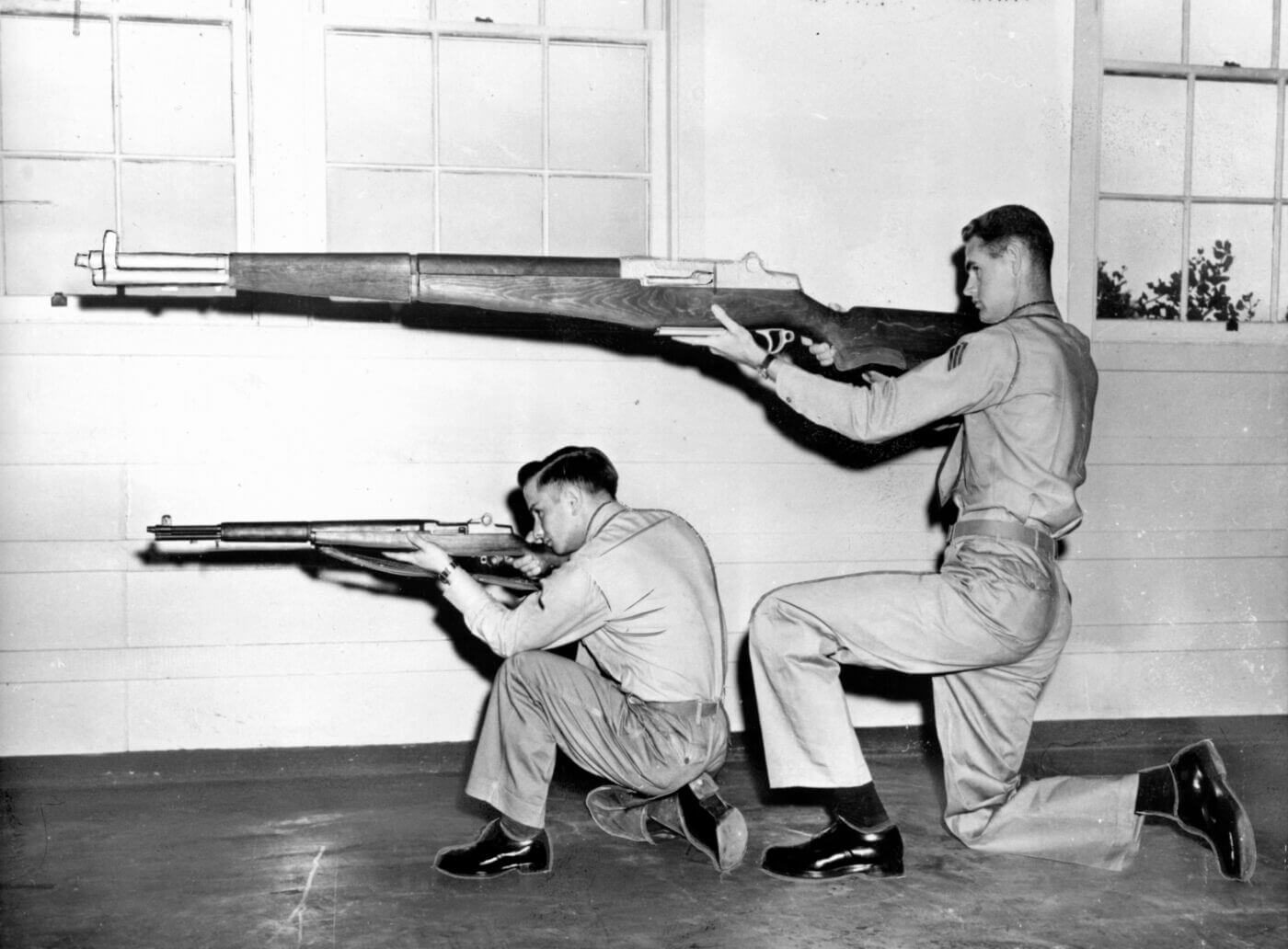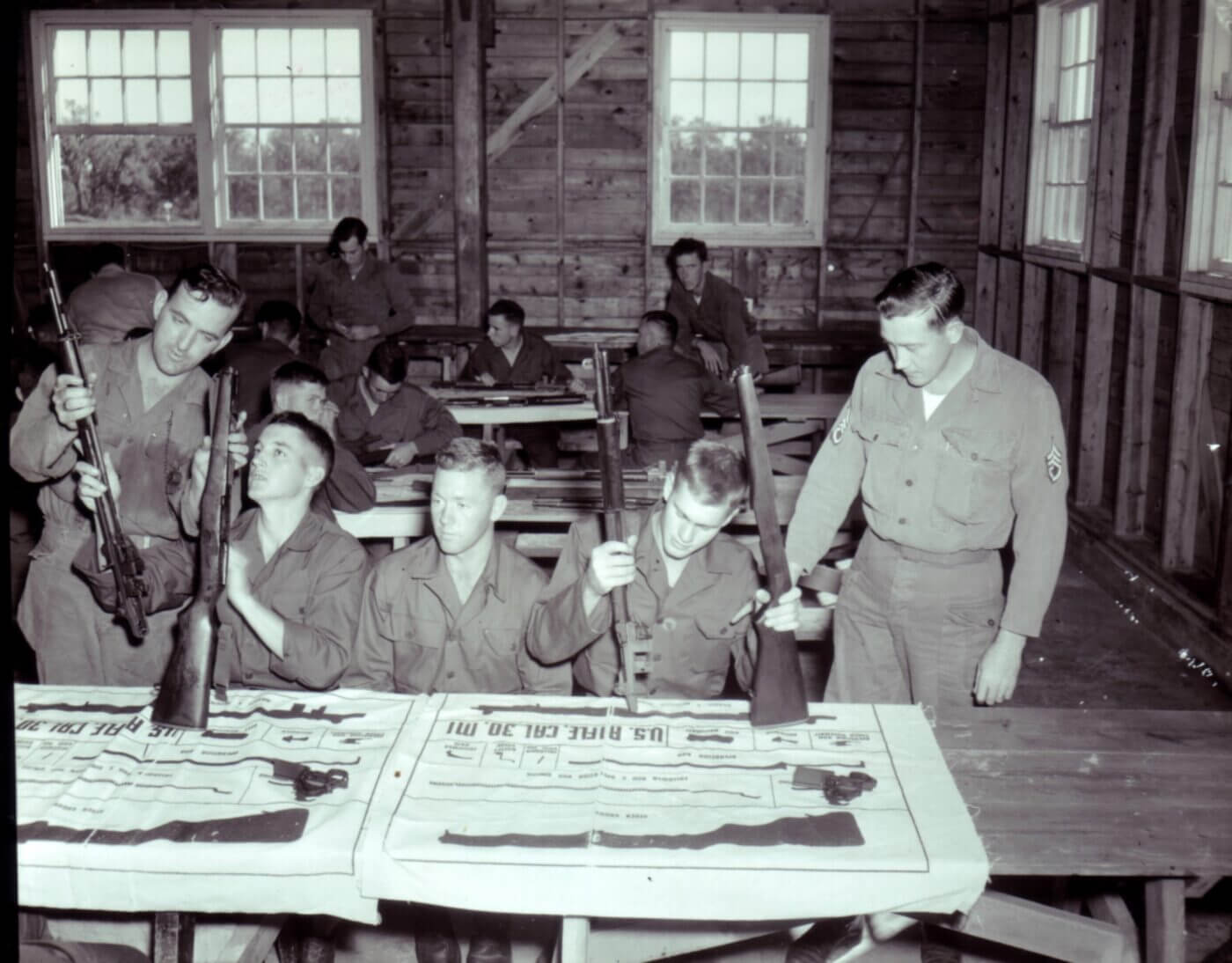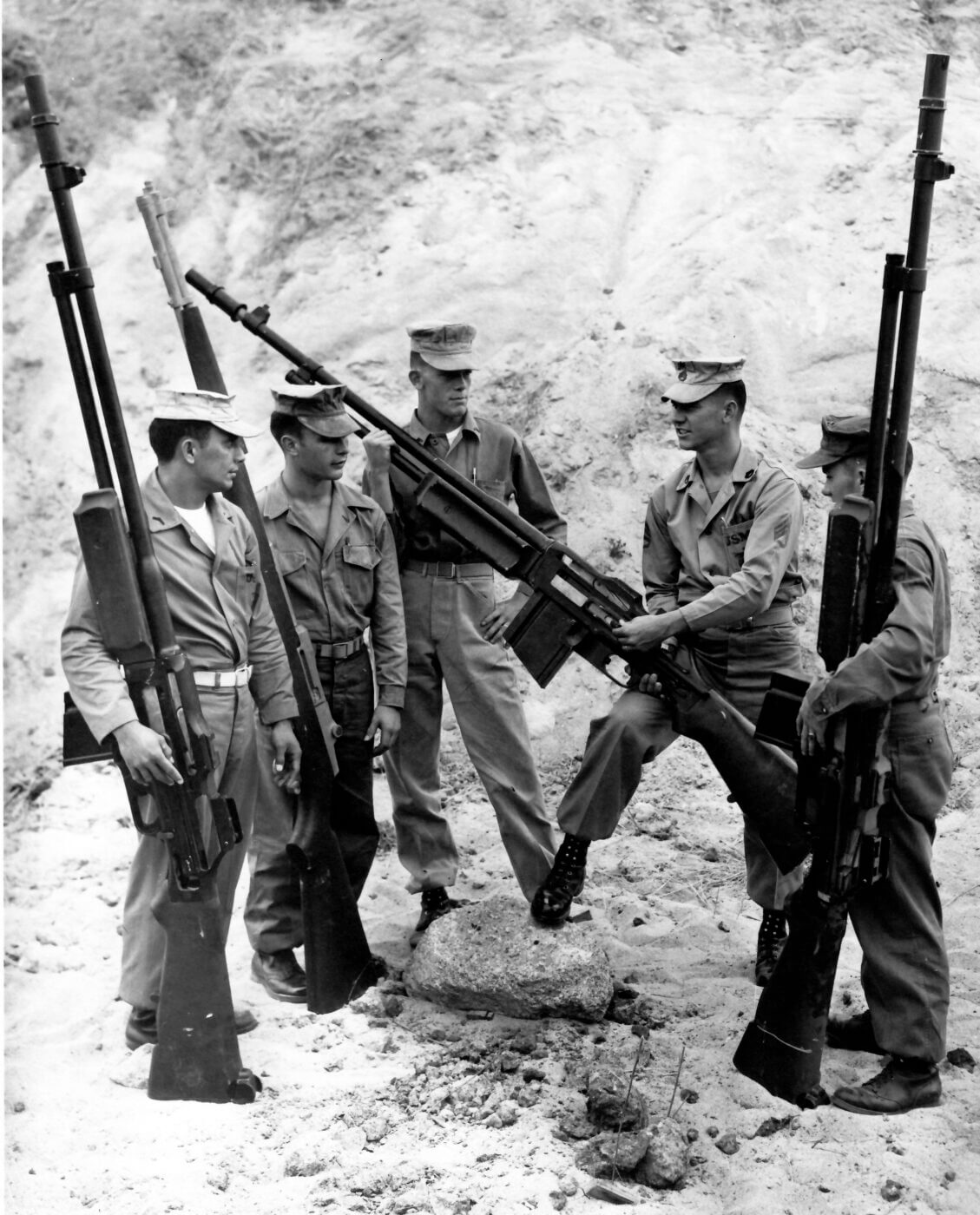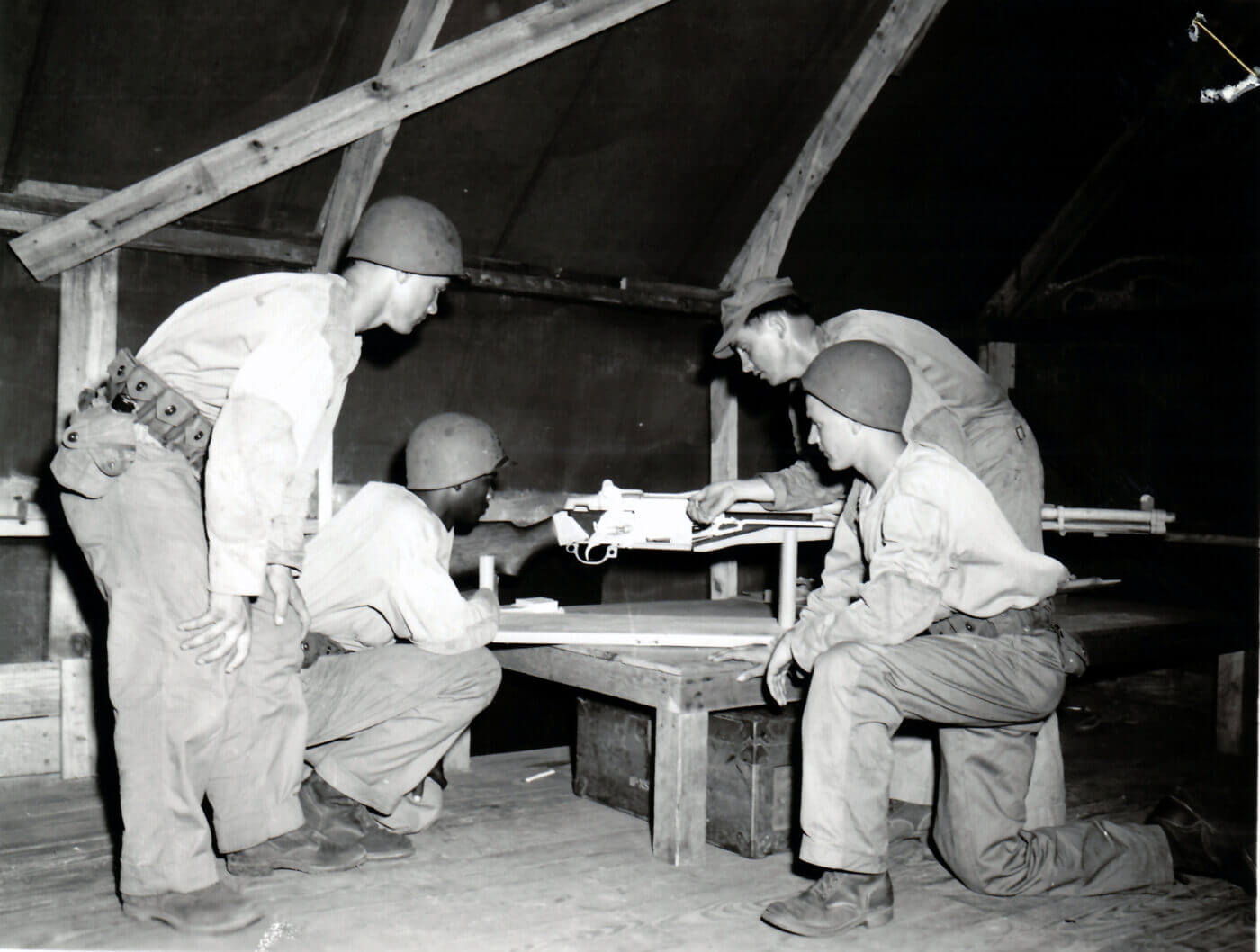The Arsenal of Democracy’s Oversized Training Guns
June 1st, 2021
5 minute read
Our friends at the Fort Harrison Military Museum in Helena, Montana, contacted us about an interesting discovery they made while searching through one of their storage sheds. Sorting through dust-covered artifacts, our friends at the museum stumbled across a small treasure-trove of unique pieces of American firearms history they put on display: a group of the double-sized training aids representing key U.S. small arms of World War II and the immediate post-war period.

The museum’s collection includes:
- The M21: the M2 Carbine training aid
- The M22: the M1919 Machine Gun training aid
- The M23: the M1918A2 BAR training aid
- The M24: the M1 Garand rifle training aid
The big (2X normal size) training aids have become quite rare in the 50+ years since they were released as surplus items. When I was a kid in the late 1960s, many Army/Navy surplus stores and gun shops had them on display, but they are ultimately a bit fragile, and they take up quite a bit of space in a retail operation.

The Fort Harrison Military Museum had the right idea however, and the right environment to display them. Consequently, visitors to the museum get the same fast visual identification of the weapons’ internal operations just like new recruits did during the early 1950s.
Big Idea in Firearms Training
During World War II, the U.S. military needed to train as many men as quickly as they could. In those demanding circumstances, many new training methods were born, and most of those ideas focused on providing information using over-sized graphic presentations. Posters, training films, and film strips were created (and supported by workbooks) for many topics — and particularly for small arms. The concept of the double-size training aids took this idea one step further, providing a tactile, and instantly self-explanatory educational tool.

The first known of these 2X training aids was the BAR Double Size “Device 3-F-3”. During 1943, the U.S. Army, working with the Naval Research Special Devices Center, created a double-size, non-firing, sectionalized training model of the M1918A2 Browning Automatic Rifle, with the intended purpose:
“For reasons of easier identification by training classes, all vital component parts have been made to the same scale, two times as big as the corresponding parts in the operational weapon.”
The U.S. Navy Training Manual P-1151 describes it like this: “Device 3-F-3 demonstrates the complete cycle of performance of the operational piece. This includes loading and unloading, extraction and ejection of simulated cartridges, action of hammer, trigger, safety, clip latch, change lever and sear, movement of gas piston, and operation of the buffer spring.”

The visible operational features in the sectional training aid were color-treated to look like the real thing. The device is hollow and constructed of a light aluminum, so although massive, it is not heavy. Simulated ammunition, made of plastic, was used to demonstrate how the magazine was loaded. A transportation/storage case was provided, and the plywood top of the case could be removed and used as a display base.
The manufacturer was J.H. Keeney & Company of Chicago, Illinois. Later, the double-size M1918A2 BAR training aid was named the M23, and these were then made by Dellenbarger Machine Company Inc., of New York City in the early post-WWII period.
A Massive M1?
The M24 training aid is an oversized M1 Garand rifle. It is 86″ long, 19¾” high and 17″ wide. It illustrates the inner workings of the M1 rifle, shown “sectionalized” for use in classroom or on the range. A group of 2X plastic cartridges and an en-bloc clip were provided to demonstrate loading of the rifle.

The Navy handled the original procurement, but the U.S. Army’s Raritan arsenal (Edison, New Jersey) handled the production, with direction from the Training Aids Supply Office (Fort Benning and Fort Jackson) until Raritan closed in 1964. Soon after, the remaining 2X M-series training aids were made surplus.
Where Are They Now?
The big training aids came and went rather quickly. They were lightly constructed, and so consistent problems with damage and a lack of spare parts were encountered during their era. Also, the M1 rifles, M2 Carbines, BARs and Browning M1919 machine guns were being replaced in U.S. service during the late 1950s, so there was less and less need to train our troops on them.

Most of the examples found today are incomplete, or, at best, refurbished. During the later 1960s, some double-sized training aids were constructed for the M14 rifle and M16 rifles, the M60 machine gun and the Browning M2 .50 caliber machine gun.
Montana Military History Museum
Fort Harrison, now a National Guard installation, is known as the home of the First Special Service Force (1SSF), the “Black Devils” or “Devil’s Brigade” of World War II fame. The fort’s museum contains many rare artifacts and is the ultimate destination for those interested in the U.S./Canadian 1SSF. We appreciate their contributions to this article, and to helping to preserve our military history.
Visit the Montana Military Museum website.
Editor’s Note: Please be sure to check out The Armory Life Forum, where you can comment about our daily articles, as well as just talk guns and gear. Click the “Go To Forum Thread” link below to jump in and discuss this article and much more!
Join the Discussion
Continue Reading
Did you enjoy this article?

 65
65






